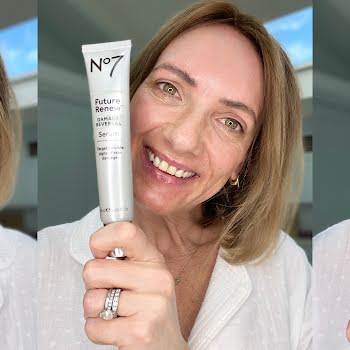
By Melanie Morris
26th Jan 2016
26th Jan 2016
If there’s one product you should add to your boudoir in 2016, make it a skin oil. We check out the ever-expanding selection and discover why they’re so effective.
We all know January is a time for cosseting, repairing and minding. We’re all broke, lardy, and dear Mother Nature seems to save her most cruel climate conditions for the New Year. Add central heating, limited daylight and diminished levels of vitamin D, and it’s no wonder that Irish skin’s response is to flare, flake and flush – all strong autoimmune responses to the trials we’ve been putting it through during winter, and especially over the ever- lengthening festive season.
We are constantly reminded that skin is our largest body organ. Its roles are many, but primarily it acts as a barrier – our first line of defence to invaders, pathogens and potentially harmful foreign bodies. Skin also helps us control body temperature, it’s an excretory organ and it regulates and protects us. We rely on our skin for a lot more than just its appearance.
Hence, when the going gets rough (inside and out), the skin will react. And so, around about now, the obvious solution is kindness; to start fixing the damage with a cosseting, regular skincare regime using nourishing products. As our cell walls are made up of flexible, liquid lipids (oils), treating like with like makes sense. Say hello to skin oils.

?Many people believe that oils do not penetrate as well as a moisturiser or lotion,? says Dr Tom Mammone, executive director of skin physiology and pharmacology at Clinique, which launches a full collection of facial oils this month. ?However, facial oils are able to pass through skin’s layers quicker. This is in part due to an oil’s lightweight texture and the nourishing ingredients that are used. Oils also help to strengthen the skin’s barrier with a blend of botanical lipids, revealing softer, smoother skin.?
While there’s been a recent slew of great, nourishing new oils launched on the market, the concept of cleansing and hydrating skin with oil isn’t a new or a revolutionary one. ?Oils have been around for many years,? says Dr Mammone, ?but the texture was completely different from what we see today.? Back in the 1950s, Hollywood screen sirens used oil to remove the heavy panstick make-up they were embalmed with every day. It was Japanese make-up artist Shu Uemura who refined the process, creating a lighter, more suitable facial cleansing oil, which remains a cult product around the world today. ?Oils are now more emollient, and not thick or greasy,? says Dr Mammone. ?The lightweight texture of oil helps to penetrate skin, so it’s not heavy or oily.?
And while the products have always been there, the breakthrough has really come from the user side. ?Consumers are more experimental and open to different form choices, so we are seeing this upward swing with oil.?
The preconception that skin oils exacerbate sebum (oil) production in the skin, leading to spots or breakouts, is a redundant one. As a cleanser, oil emulsifies with the oils in cosmetics, breaking make-up down for more effective removal. Then, as a moisturiser, oil can help regulate natural sebum production, again working with the skin, rather than stripping it of natural oils, which would upregulate production. For that reason, using skin-type suitable oils can have a positive, rather than comedogenic, effect on oiler complexions.

For Body
1 ESPA Detoxifying Salt Scrub, €50 2 Jo Malone London Red Roses Bath Oil, €76 3 Waxperts Beautiful Body Oil, €12.99 4 Aveda Stress-Feix Creme Cleansing Oil, €29.50 5 Nuxe Huile Prodigieuse Multi-Purpose Shimmer Dry Oil, €26.50

For Face
1 L’Occitane Shea Comforting Oil, €36 2 Tom Ford Purifying Cleansing Oil, €27 3 Cr’me de la Mer The Renewal Oil, €180 4 Shu Uemura Cleansing Oil, €84 5 Clinique Smart Treatment Oil, €44
This article was originally published in the January issue of IMAGE Magazine.























